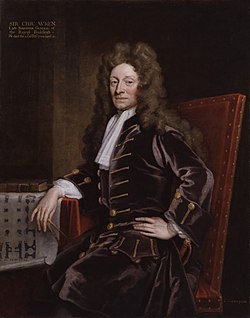
The post of Surveyor of the Fabric of Westminster Abbey was established in 1698. [n 1] The role is an architectural one, with the current holder being responsible for the upkeep and maintenance of the Abbey and its buildings. [n 2] In the past, the role has involved overseeing new construction work as well as restoration and architectural conservation. The post has been held by the following people:
Contents
- Christopher Wren (1698–1723) [1] [n 3]
- Nicholas Hawksmoor (1723–1736) [1]
- John James (1736–1746) [1]
- James Horne (1746–1752) [1]
- Henry Keene (1752–1776) [1]
- James Wyatt (1776–1813) [1]
- Benjamin Dean Wyatt (1813–1827) [1]
- Edward Blore (1827–1849) [1]
- George Gilbert Scott (1849–1878) [1]
- John Loughborough Pearson (1878–1897) [1]
- John Thomas Micklethwaite (1897–1906) [1]
- William Lethaby (1906–1928) [1]
- Walter Tapper (1928–1935) [1]
- Charles Reed Peers (1935–1951) [1]
- Stephen Dykes Bower (1951–1973) [1]
- (John) Peter Foster (1973–1988) [2] [12] [13]
- Donald Buttress (1988–1999) [2] [14]
- John Burton (1999–2012) [15]
- Ptolemy Dean (2012–present) [16]
